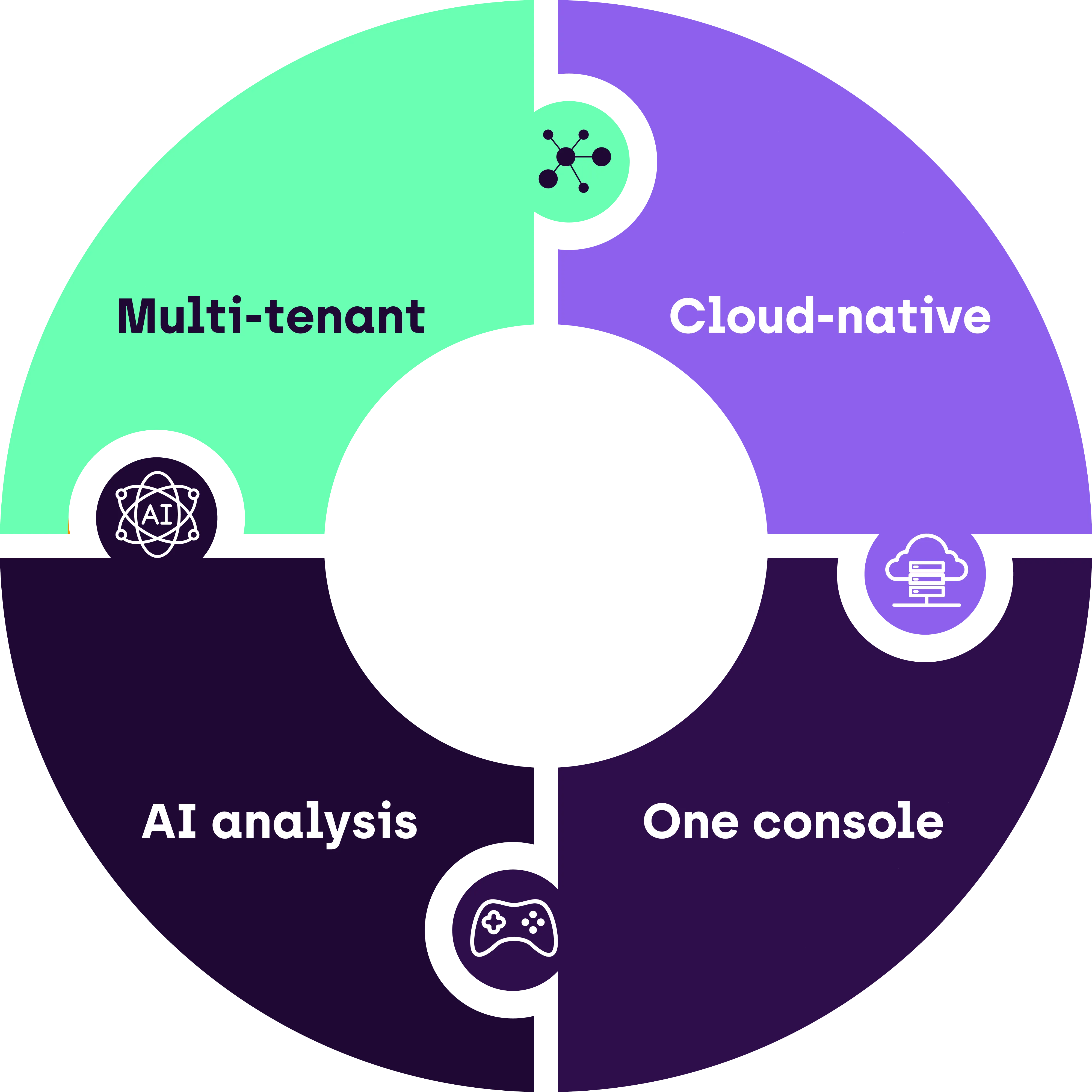The Power of XDR in Web3 Security
Leveraging AI and Real-Time Monitoring for Unparalleled Protection in the Decentralized World

XDR stands for extended detection and response, which uses AI to natively correlate each network, endpoint, and data stored for analytics and real-time machine learning to improve every stage of security operations, from detection to alert triage of highly evasive attacks.
What Is XDR?
- Security is of the utmost significance in the Web3 ecosystem, where protocols and blockchains are at the core of decentralized applications and smart contracts. In numerous ways, XDR can support proactive Web3 security.

Do we need XDR in Web3?
- Making sure there are strong security measures is crucial in the quick-paced Web3 world where decentralized finance (DeFi) protocols and smart contracts flourish.
- In this decentralized environment, traditional security methods fall short, necessitating novel solutions that meld Web3's complexity with cybersecurity. As a result, the Web3 ecosystem really requires an XDR-like solution to protect it from the malicious Blackhat group.
How Does Cyvers Provide Real-Time Incident Response & Alerts?
- Innovative strategies adapted to the decentralized characteristics of the Web3 ecosystem are needed to secure it. By tackling the particular problems that Web3 presents, Cyvers bridges the gap with its XDR capabilities, specialized Web3 SOC, and cutting-edge detection engineering.
- Our product, VigiLens collects and aggregates data from multiple sources, including blockchain networks, dark web forums, and hacker communities, to provide a comprehensive view of the threat landscape. Its machine learning models analyze this data to identify patterns and detect anomalies, providing early warning of potential threats.
- By unifying security-relevant endpoint detections with telemetry from various sources like on-chain network analysis, previously discovered smart contract vulnerability patterns, and social engineering techniques of an extensive database of malicious contracts, MalconAPI offers a reliable, real-time, and extensive database of malicious contracts, protecting users and businesses from potential thefts and network disruptions.

Understanding Proactive Threat Detection
Flash Loan Attack, for instance.
Flash loans are a well-liked feature in the Web3 ecosystem that lets customers borrow a sizable sum of money in a single transaction as long as the borrowed amount is paid back in the same transaction. Nevertheless, if not properly protected, this feature could be misused.
For example, a malicious actor could launch a flash loan attack by taking advantage of a flaw in the DeFi protocol's flash loan mechanism by using the following steps:
- Vulnerability Discovery: The suspicious actor discovers a flaw in the DeFi protocol's smart contract code that affects the verification of loan collateral.
- Execution of a Flash Loan: The attacker starts a Flash Loan transaction, taking out a sizeable loan from the DeFi protocol in a single transaction.
- The attacker manipulates the loan collateral validation procedure to trick the smart contract as a means of exploiting the vulnerability. To get beyond security measures, they can manipulate pricing, take advantage of reentrancy assaults, or use other strategies.
- Unauthorized Transactions: By utilizing the brief increase in liquidity, the attacker uses the borrowed funds to carry out many unauthorized transactions within a single transaction.
- Paying Back the Loan: In accordance with the flash loan mechanism, the attacker must return the borrowed funds to the DeFi protocol at the conclusion of the transaction. This prevents personal financial damage and aids in hiding any signs of the attack.
- Impact and Losses: The flash loan assault may have a number of negative effects, including emptying the protocol's cash, altering market pricing, or briefly disrupting the DeFi ecosystem. The corrupted protocol may cause financial damage to those that engage with it, and its reputation may be tarnished.
Role of XDR as a Real-Time Alerting and Monitoring System
In the above case, identifying and preventing the flash loan attack would be greatly helped by a real-time alerting and monitoring system.
- Real-time detection: Throughout the blockchain, the monitoring system continuously examines transactions and smart contract activity. It immediately recognizes the high-value transactions and unusual borrowing patterns linked to the flash loan attack.
- The technology creates real-time alerts to inform the security team of the potential attack as soon as the unusual actions are discovered. These notifications include crucial details, like the address of the attacker, the compromised smart contract, and the suspicious transactions involved.
- Prompt Investigation: The security team may look into the alarm right away, examining the smart contract code and transaction information to determine the type and scope of the assault. They can then evaluate the vulnerability, identify the affected users, and decide what needs to be done to reduce additional risks.
- Incident Response and Mitigation: The security team can act quickly to lessen the effects of the attack thanks to the real-time alerting and monitoring system. To resolve the issue, they might implement fixes or upgrades, momentarily pause the vulnerable transactions, or work with other protocols to reduce the attack's wider effects.
Conclusion
A strong security system can help identify and respond to risks like flash loan assaults by offering real-time notifications and ongoing monitoring, preserving the integrity and stability of the Web3 ecosystem. By utilizing real-time smart contract monitoring, Cyvers strengthens Web3 security, empowering businesses and individuals to navigate an ever-changing threat environment and realize the full potential of this revolutionary technology.
Next generation threat prevention
Identify patterns and anomalies across blockchains in real-time for proactive mitigation.




.webp)
.webp)
.webp)

.webp)
.webp)